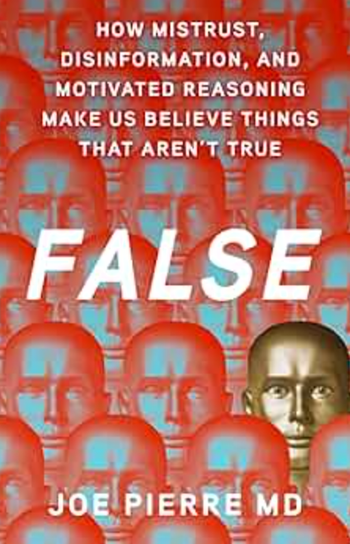
- Vol 31 No 8
- Volume 31
- Issue 8
Fifty Shrinks
Fifty Shrinks allows us to see ourselves through the sensitive eyes of a colleague and artist.
BOOK REVIEW
Reviewed by Richard M. Berlin, MD
[[{"type":"media","view_mode":"media_crop","fid":"27042","attributes":{"alt":"Fifty Shrinks book review","class":"media-image media-image-right","height":"122","id":"media_crop_4846519123318","media_crop_h":"0","media_crop_image_style":"-1","media_crop_instance":"2589","media_crop_rotate":"0","media_crop_scale_h":"0","media_crop_scale_w":"0","media_crop_w":"0","media_crop_x":"0","media_crop_y":"0","style":"float: right;","title":" ","typeof":"foaf:Image","width":"175"}}]]by Sebastian Zimmerman, MD;
New York: Sebastian Zimmerman; 2014;
120 pages • $65 (hardcover)
When psychiatrist/photographer Sebastian Zimmerman began building his office practice in 2001, he found himself confronted by a paradox: he spent his days engaging patients in the intense connection of the treatment relationship, but at the same time felt he worked in isolation. As an antidote to his “cerebral and sedentary” occupation, Zimmerman freed himself from the confines of his office and began his project of photographing psychiatrists, psychoanalysts, psychologists, and psychotherapists in their offices, primarily in New York City. About 10 years after his initial inspiration, he visited me in my office in the Berkshires to create one of the 50 portraits. Using his “empathic lens,” a portrait emerged over a few delightful hours talking about our work, photography, and many other shared interests.
Zimmerman trained at the International Center of Photography in New York, and his creative mastery and expertise are obvious throughout this magnificent collection of portraits. As a group, psychiatrists and psychotherapists tend to wear a professional mask, revealing little of their personal lives. Zimmerman’s unique skill as a psychiatrist and photographer is to offer a glimpse of the person behind the mask. His photographs are gorgeous: beautifully lit, filled with the drama of shadow and light, intimate, open to the camera, and engaging, echoing classic portraits throughout the ages. In addition, each photograph is accompanied by a page of text summarizing Zimmerman’s interviews with his subjects as he photographed them. The balance of words and images works to reveal even more about the subjects, who represent a diverse group of men and women with many different treatment orientations.
Perhaps the most fully realized photograph in a book filled with stunning images is the portrait of Martin Bergmann (approaching 100 years old at that time, still lecturing and treating patients), seated on his couch, hands folded, deep in a state of contemplation. His elegant office contains an oriental rug, a polished wood bookcase filled with old texts, a white orchid flowered in an arc echoing his posture, and two windows framing majestic views of Central Park-the entire portrait reminiscent of an Old Master painting. And even though his pose is serious, Bergmann’s commentary includes a joke he likes to tell patients. Who wouldn’t want to see this man for treatment?
Another standout is the image of Jamieson Webster wearing a long dress, standing barefoot on her couch, caught by the camera just as she begins to fall backward. In the accompanying text, Webster describes an adolescent patient with a recurring dream of falling off his bed, and quotes the poet Rilke who asked, “Is there one whose gentle hands hold up all this falling?” Rilke’s question leads to a fascinating meditation about what happens to each of us in our lives “before the fall.”
Even as psychoanalysis has faded in influence, many analysts are represented in this collection. Seeing them reminded me of interviewing for residency programs in the mid-1970s in offices that looked just like these: pictures of Freud, African masks, archeological objects, and the ever-present couch covered with an oriental rug. Zimmerman’s portraits are a vivid reminder of how much our field has changed in a generation.
Fifty Shrinks allows us to see ourselves through the sensitive eyes of a colleague and artist. Visually, intellectually, and emotionally, Dr Zimmerman’s project captures the drama of our diverse profession when a creative and empathic observer is allowed to look behind our masks.
Articles in this issue
over 11 years ago
Mandatory Reporting of Suspected Child Abuseover 11 years ago
Adult Implications of Childhood Maltreatmentover 11 years ago
Elder Abuse and Neglect: Appearances Can Be Deceptiveover 11 years ago
The Role of Psychiatry in Sex Offender Managementover 11 years ago
Munchausen by Proxy and Factitious Disorder Imposed on Anotherover 11 years ago
Interventions for Perpetrators of Intimate Partner Violenceover 11 years ago
Comics and Medicine: A Conference…or a Movement?over 11 years ago
Psychiatry on the Edgeover 11 years ago
Suicidality and Depression Treatments in YouthsNewsletter
Receive trusted psychiatric news, expert analysis, and clinical insights — subscribe today to support your practice and your patients.














